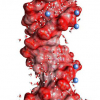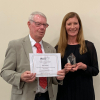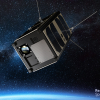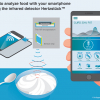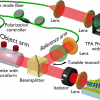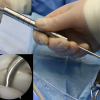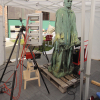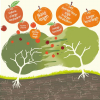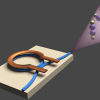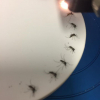Infrared Spectroscopy News
A range of components for miniaturised mid-IR gas sensors from source to detector have been developed by the Horizon 2020 project MIREGAS.
Pairs of negatively charged phosphate groups and positive magnesium ions represent a key structural feature of DNA and RNA embedded in water. Vibrations of phosphate groups via 2D-IR spectroscopy have now been established as selective probes of such contact pairs and allow for a mapping of interactions and structure on the ultrafast time scales of molecular dynamics.
A miniature food scanner based on NIR spectroscopy will allow consumers and supermarket operators to determine the ripeness and shelf life of produce and display the results via an app.
The NeoSpectra-Micro chip-scale, near infrared spectral sensor has been customised for use in Henkel Beauty Care’s Schwarzkopf Professional SalonLab Smart Analyzer for hairdressers.
At the IRDG Christmas Meeting held at University College London, the 2018 Norman Sheppard Award of the UK’s IRDG was presented to John Chalmers.
A Finnish nanosatellite has now reached space equipped with the world’s smallest infrared hyperspectral camera and returned its first images.
BASF hopes that an infrared sensor developed by a spin-off company will be integrated into smartphones by 2022 and provide NIR analysis of food by consumers.
“Ghost” spectroscopy reveals no ghosts, but is real-world spectroscopy with classical correlated photons in the spirit of quantum sensing.
The winner of this award from the UK’s Infrared and Raman Discussion Group is John Chalmers, who was Article Editor for Spectroscopy Europe for many years.
An arthroscopic near infrared spectroscopic probe for evaluation of articular cartilage and subchondral bone structure and composition could improve early detection of cartilage lesions.
Outdoor bronze statues suffer from corrosion by the urban atmosphere. Short wavelength infrared hyperspectral imaging can determine the spatial distribution of corrosion products on the statue, none of which can be recognised by visual observation.
Machine learning techniques using a combination of the layer clustering and decision tree methods aids prediction of spectra.
PhD students worldwide who have defended their thesis in the last two years are invited to apply for this award.
Shimadzu’s IRSpirit and AIM-9000 have been chosen from over 6300 items from 59 countries as winners of Red Dot Awards.
Columbia Engineering system could lead to a spectroscopy lab-on-a-chip for real-time sensing in the microseconds
Metrohm AG has acquired B&W Tek’s Spectroscopy Solution business, B&W Tek LLC, as well as several overseas subsidiaries.
NIR spectroscopy has been shown to be a cheap and effective tool that could save lives by helping health authorities target mosquitoes infected with Zika virus.
The winner of the 2018 Tomas Hirschfeld Award is Professor Christian Huck.
Applications for this prestigious award are invited by 30 November 2018.
Specac has won the Queen’s Award for International Trade.

